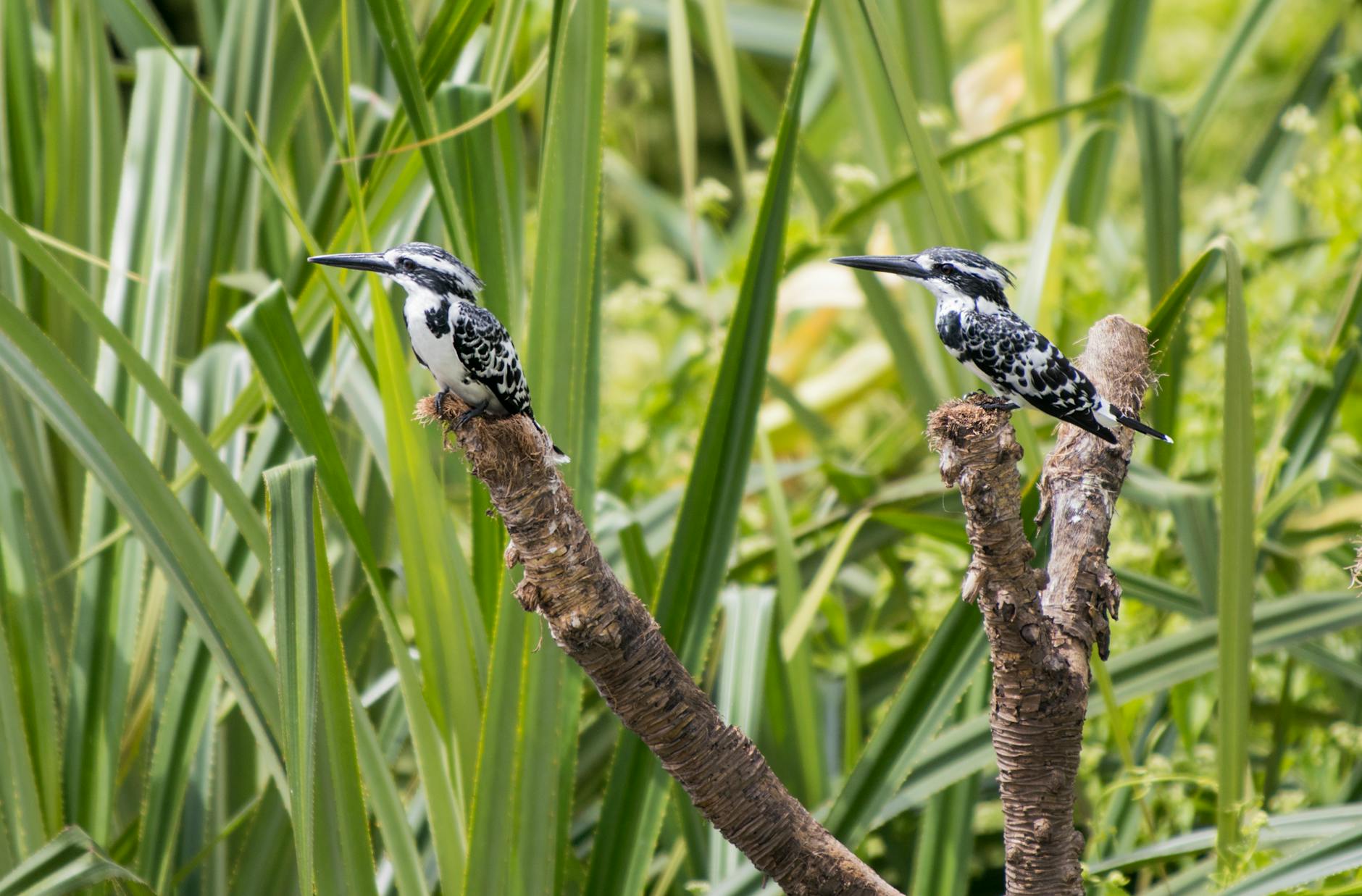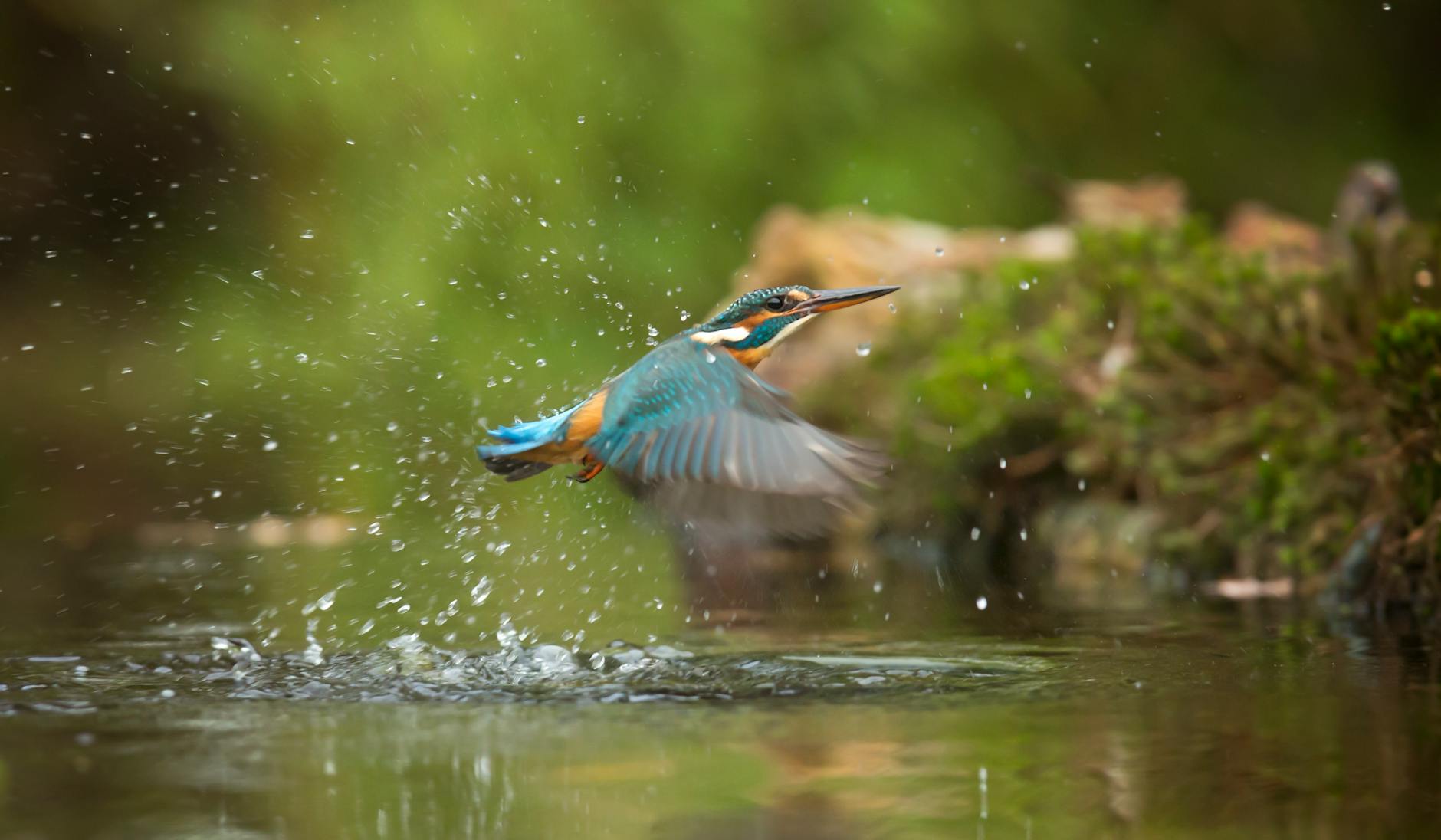Where to Find Kingfisher Nests: A Birdwatcher’s Guide
Spotting a kingfisher in the wild is a thrilling experience for any birdwatcher. These striking birds, known for their vibrant colours and unique nesting behaviours, offer a fascinating glimpse into nature. But where can you find their nests?
Kingfishers typically nest in burrows dug into sandy riverbanks or steep banks near water sources. Observing their nesting habits not only enhances your birdwatching skills but also deepens your appreciation for these remarkable creatures.
In this guide, we’ll pinpoint the best locations to look for kingfisher nests, share tips on the right time to visit, and discuss what to consider for a successful outing. Whether you’re a seasoned birdwatcher or just starting out, understanding where to find kingfisher nests is key to enjoying your time in the field. Prepare for an adventure that promises engaging moments and breathtaking sights.
Understanding Kingfisher Nesting Habits
Kingfishers are not just beautiful birds; their nesting habits are equally intriguing. Knowing where and how they nest can significantly enhance your birdwatching experience. This section covers the typical nesting locations, the structures they create, and their seasonal patterns, providing useful insights for any birdwatcher.
Nesting Locations
Kingfishers prefer locations near water, which is crucial for their feeding habits. Here are the most common nesting sites:
- Riverbanks: They often choose sandy or soft earthen banks, which are easy to dig into. Such sites offer a steady supply of fish nearby.
- Pond Edges: Shallow ponds with abundant vegetation also serve as ideal nesting spots.
- Wetlands: These areas provide a rich habitat for fish and insects, making them attractive for kingfishers.
Their choice of location is essential for both feeding and protecting their young. When searching for kingfisher nests, focus on these watery habitats. For further details on kingfisher habitats, check All About Birds.
Nesting Structures
Kingfishers do not build traditional nests like many birds. Instead, they excavate burrows into riverbanks. The dimensions of these burrows can vary significantly:
- They typically range from 30 to 90 cm in length.
- Some can reach up to 15 feet (around 4.5 metres) long.
At the end of the tunnel, they create a slightly wider chamber for laying eggs. This chamber is angled downward, ensuring the eggs stay in place and do not roll out. For a deeper dive into how kingfishers build their nests, see the article on Scottish Wildlife Trust.

Photo by Ramesha Sheshachala
Seasonal Nesting Patterns
The breeding season for kingfishers varies with species and location. Generally, it occurs in the warmer months, ensuring that there are plenty of food resources for the young:
- Common Kingfishers usually breed between March and August.
- Belted Kingfishers tend to nest from late March to June.
As breeding approaches, kingfishers may select their nesting locations carefully, influenced by the availability of food and suitable banks for burrowing. This strategic selection helps ensure the survival of their chicks. For detailed breeding habits of kingfishers, refer to this resource from the Audubon Society.
Identifying Suitable Habitats
Finding kingfisher nests requires keen observation and understanding of their preferred habitats. Let’s explore the vital elements that define suitable nesting sites for these vibrant birds.
Water Bodies
Kingfishers thrive near water bodies that support their feeding habits. When scouting for nests, keep an eye out for:
- Clear Streams: Look for flowing water with minimal pollution. These streams often have plenty of fish and aquatic insects, perfect for feeding.
- Lakes: They prefer lakes with accessible shorelines and abundant fish. Shallow edges provide great hunting grounds.
- Rivers: Fast-flowing rivers with sandy banks are ideal. Riffles offer excellent fishing opportunities and are frequently chosen for nesting.
By focusing on these types of water bodies, you can significantly increase your chances of spotting a kingfisher nest. For more information about kingfisher habitats, visit All About Birds.

Photo by Gaspar Zaldo
Bank Structure
The bank structure is crucial for kingfisher nesting success. Look for these features:
- Soil Composition: Sandy or soft earth is ideal for digging. Harder soils make burrowing difficult, so focus on areas that seem easily excavatable.
- Bank Height: Kingfishers often prefer banks that are at least 2 metres high. This elevation helps protect nests from flooding and predators.
- Lack of Vegetation: Ideally, banks should be devoid of dense vegetation. Roots can hinder burrowing, making these areas less appealing for nesting.
Understanding these bank characteristics can guide your searches for kingfisher nests. For a comprehensive look at bank structures that support nesting, check out Audubon Field Guide.
Vegetation and Cover
Vegetation plays a significant role in kingfisher nesting and hunting behaviours. Consider these aspects:
- Natural Cover: Areas with overhanging branches or dense vegetation provide essential cover. This type of environment helps protect the nest from predators and harsh weather.
- Hunting Perches: Tall vegetation or old trees nearby serves as excellent vantage points. This allows kingfishers to scout for prey before diving in for a catch.
- Ecosystem Balance: A diverse plant life not only protects nests but also ensures a steady food supply through a thriving aquatic ecosystem.
The presence of vegetation enhances both nesting success and feeding opportunities. For further insights into the importance of vegetation around kingfisher nests, read more at Belted Kingfisher Life History.
Best Locations for Kingfisher Nesting
Finding kingfishers in their natural habitat can be rewarding, but knowing where to look makes all the difference. This section highlights some of the best spots for observing these stunning birds while nesting.
Popular Birdwatching Sites
Several renowned birdwatching sites across the UK are particularly favourable for spotting kingfishers. These areas provide the perfect blend of habitats that attract these vibrant birds. Here are a few top locations:
- Lackford Lakes, Suffolk: Known for its diverse ecosystems, Lackford Lakes is a prime spot to catch a glimpse of kingfishers.
- London Wetland Centre, Barnes: This urban oasis is home to numerous wildlife species, including the common kingfisher.
- The Great Fen, Cambridgeshire: A protected area with a focus on wetlands, ideal for observing kingfisher activity.
- RSPB Rye Meads, Hertfordshire: A sought-after destination for birdwatchers. Visitors often spot kingfishers along the riverbank.
- Strumpshaw Fen, Norfolk: This fen landscape is excellent for viewing kingfishers, especially during the breeding season.
For more information on these popular locations, check out Countryfile.

Photo by Monique Laats
Local Nature Reserves
Local nature reserves offer sanctuary to many bird species, kingfishers included. These protected areas maintain suitable habitats that support nesting and feeding. Noteworthy reserves for kingfisher sightings include:
- Walthamstow Wetlands, London: A significant wetland area providing ideal nesting opportunities along its waters.
- Linford Lakes, Milton Keynes: This scenic spot boasts a mix of lakes and rivers, perfect for kingfishers.
- Horton Kirby and South Darenth, Kent: A lesser-known gem where birdwatchers can observe these birds in their natural environment.
- Fairburn Ings, Yorkshire: With its vast wetland areas, Fairburn Ings attracts many birdwatchers, eager to spot kingfishers.
Visiting these local nature reserves can enhance your chances of encountering kingfishers. To find more about these amazing spots, visit Discover Wildlife.
Ethics and Best Practices for Birdwatchers
Birdwatching is a rewarding hobby, but it’s essential to approach it with respect for the birds and their habitats. Observing nesting kingfishers requires additional consideration due to their sensitivity. Here’s how you can ensure a responsible birdwatching experience.
Minimising Disturbance
When observing nesting kingfishers, it’s crucial to keep disturbances minimal. Here are some best practices:
- Maintain Distance: Use binoculars or a camera with a zoom lens to observe from afar. Getting too close may frighten the birds and cause them to abandon their nests.
- Avoid Loud Noises: Keep your voice low and avoid sudden movements that could startle the birds. The quieter you are, the less likely you are to disrupt their natural behaviours.
- Choose the Right Time: Early mornings or late evenings are ideal for watching birds when they are more active and less prone to disturbances.
- Stay on Paths: Stick to designated paths or observation areas to avoid trampling vegetation that may provide natural cover for the birds.
- Watch for Signs: Be mindful of any signs indicating nesting periods in the area. If you notice birds acting defensively, it’s time to step back.
For additional insights on birdwatching ethics, visit the ABA Code of Birding Ethics.
Legal Protections
Kingfishers, like many bird species, are protected by various laws that safeguard their nesting sites. Familiarising yourself with these protections helps you understand your responsibilities as a birdwatcher. Key points include:
- Wildlife and Countryside Act 1981: This UK law protects wild birds, including kingfishers, during their breeding seasons. Disturbing a nesting site can lead to legal action.
- Migratory Bird Treaty Act: In various countries, this act helps protect migratory birds and their habitats, which includes kingfishers. It’s illegal to disturb nests and breeding activities.
- Local Regulations: Many nature reserves and parks have specific rules to protect birds and their environments. Always check for signage and comply with local regulations.
If you observe any disturbance to nesting kingfishers, report it to your local wildlife authority. For detailed information about kingfisher conservation, check the Belted Kingfisher Life History.

Photo by Keith Proven
Conclusion
Finding kingfisher nests can be an exciting adventure for birdwatchers. Key locations include sandy riverbanks, pond edges, and wetlands, where these birds naturally thrive.
As you explore these habitats, remember the importance of being respectful. Keep your distance to avoid disturbing their nesting sites and observe from afar using binoculars.
What experiences have you had while birdwatching? Share your thoughts and tips to connect with fellow enthusiasts. Your insights can help others enjoy the wonders of nature while protecting it.










